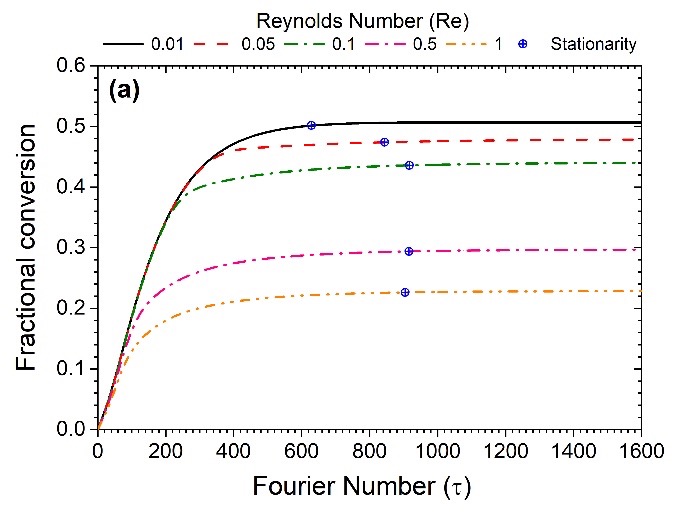 |
|
Nowadays, immobilized enzymes are utilized in several food industry applications. Some researches use apparent kinetic parameters in immobilized enzyme reactor systems, which are limited to such case studies. To enhance productivity in a packed bed reactor (PBR), a clear description of all the mechanisms (kinetic, intra-particle diffusive mass transport, fluid-particle convective mass transport, and axial dispersion) affecting the process should be established. The objective of this study was to model the isomerization of glucose in a PBR with calcium alginate beads (CAB), using an approach where the kinetic and diffusional mechanisms are described independently. The convective mass transfer (kL) and axial dispersion (Dz) coefficients were calculated from correlations. Validation was performed comparing predictions against experimental data (R2 = 0.907) of glucose conversion at the reactor’s outlet once steady state was reached. Under the study conditions, in contrast to the effect exerted by diffusive mass transport on fructose specific productivity, the effect of axial dispersion and convective mass transport is negligible. Analyzing different operation parameters via simulation, the particle size had the highest impact on the glucose bioconversion. By reducing the CAB size, the surface area is increased and thus the conversion. It is recommended to test new immobilizing agents or decreasing the CAB size, monitoring that immobilizing support preserves its stability and functionality.
Keywords: immobilized glucose‐isomerase, packed bead reactor, axial dispersion coefficient, convective mass transfer coefficient.
|
|
 |

